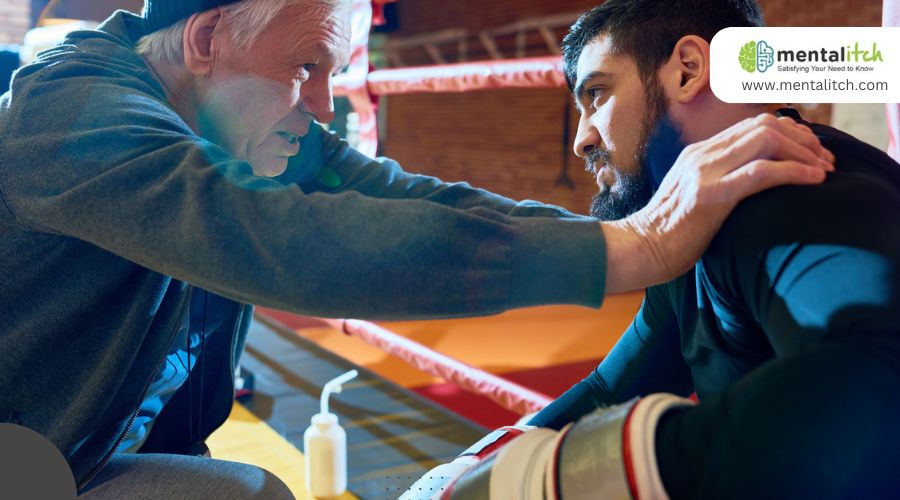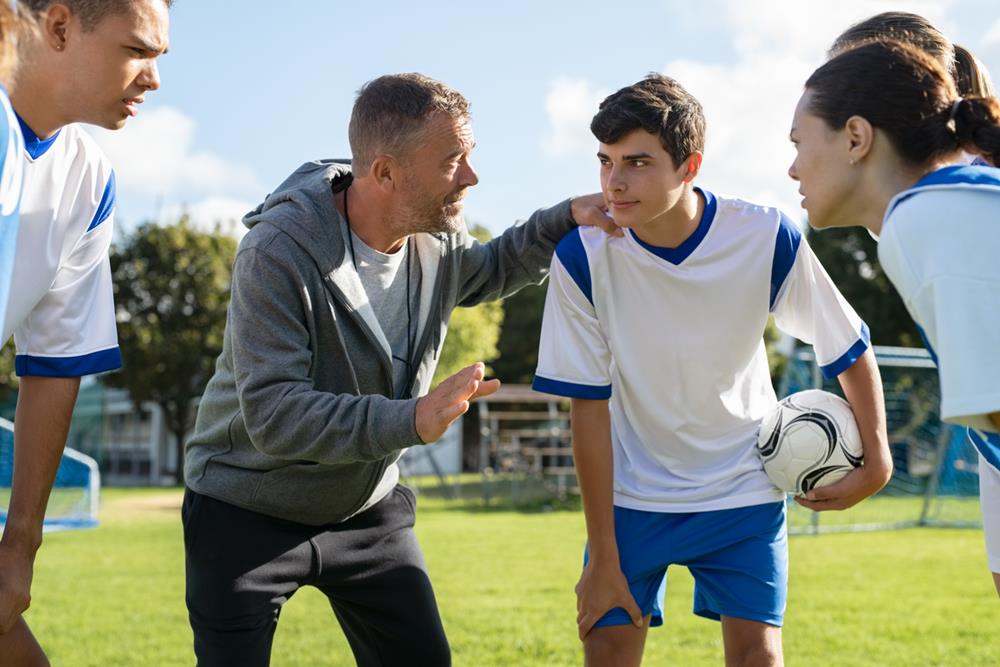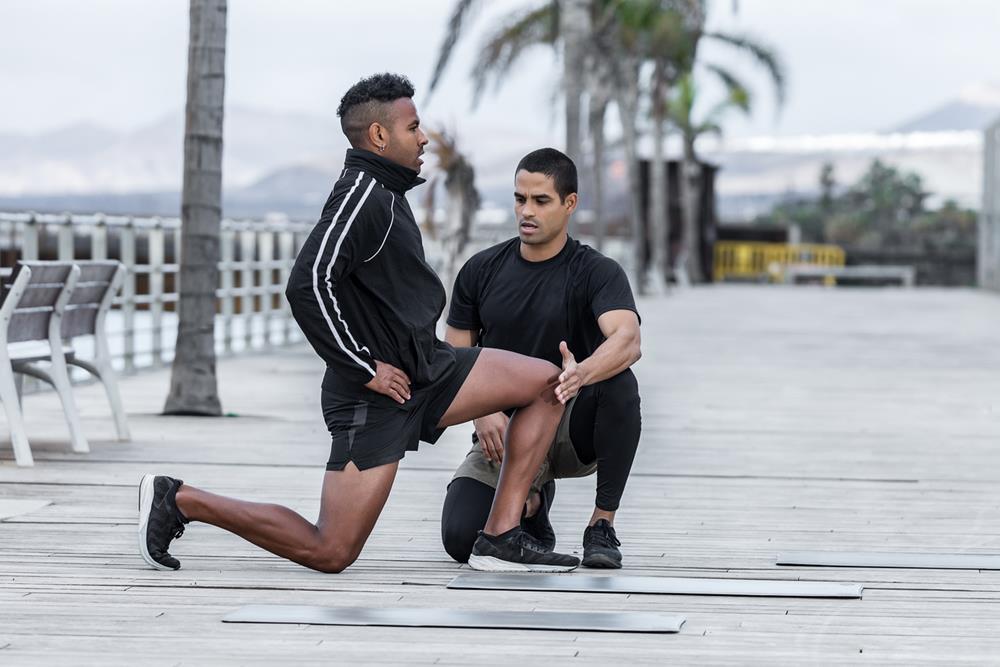Motivation is the secret ingredient that can turn a good athlete into a great one. It’s like the fuel that powers athletes to push through tough training sessions, bounce back from setbacks, and reach their full potential. But how do you spark this drive in athletes?
In this article, we’re unveiling five powerful strategies to boost motivation in athletes. From setting the right kind of goals to fostering an environment where every athlete feels valued and driven, these tips are game-changers. Whether you’re a coach looking to inspire your team or an athlete seeking that extra edge, these insights will help pave the way to achieving remarkable sports achievements. Let’s explore these five effective ways to motivate athletes and set the stage for success.
1. Setting Clear and Achievable Goals
One of the most effective ways to motivate athletes is by setting clear and achievable goals. Goals give athletes a target to aim for, creating a roadmap that guides their training and effort. But it’s not just about having any goal; it’s about setting goals that are tailored to each athlete’s capabilities and aspirations, pushing them to stretch their limits while still being attainable.
How to Set Effective Goals:
- Specificity: Goals should be precise. Instead of aiming to “improve performance,” set a goal to “reduce my 100m sprint time by 0.5 seconds.”
- Measurability: There should be a way to measure progress toward the goal, such as tracking times, weights, or distances.
- Achievability: While goals should challenge athletes, they must also be realistic to prevent frustration and demotivation.
- Relevance: Goals must align with the athlete’s overall sport and personal development ambitions.
- Time-Bound: Setting deadlines helps maintain focus and urgency.
Incorporating awards and trophies into the goal-setting process can significantly enhance motivation. Recognizing achievements, no matter how small, with awards or trophies, can provide tangible evidence of an athlete’s hard work and progress. This not only boosts their morale but also encourages a healthy competitive spirit among teammates. Celebrating milestones reached towards larger goals keeps motivation high and makes the journey toward achievement as rewarding as reaching the destination itself.
By blending the structured approach of SMART goal-setting with the motivational boost of awards and trophies, athletes can find a compelling reason to push themselves further. This combination ensures that athletes are not just working hard but are also excited about the path they are on, eagerly anticipating the next milestone and the recognition that comes with it.
2. Providing Constructive Feedback
Constructive feedback is a crucial element in motivating athletes, acting as a compass that guides their growth and improvement. It involves offering athletes specific insights into their performance, highlighting what they did well and where there’s room for improvement. The key is to ensure that this feedback encourages athletes, helping them understand how they can overcome their limitations and excel in their sport.
The Art of Constructive Feedback:
Timeliness: Feedback should be given soon after performance or behavior is observed to ensure it is relevant and actionable.
- Balance: It’s essential to strike a balance between positive reinforcement and constructive criticism. Recognizing achievements boosts confidence while carefully framed suggestions for improvement address areas where the athlete can grow.
- Specificity: General comments like “good job” or “you can do better” are less effective than detailed feedback that provides clear direction. For example, “Your starting stance has improved, but let’s work on maintaining speed in the final stretch.”
- Encouragement: Feedback should always aim to motivate. Even when pointing out areas for improvement, it’s crucial to express confidence in the athlete’s ability to improve.
- Dialogue: Feedback is most effective when it’s a two-way conversation. Encourage athletes to share their thoughts and feelings about their performance and goals. This not only helps in tailoring feedback but also empowers athletes, making them feel valued and understood.
Constructive feedback serves as a powerful motivational tool by fostering a growth mindset among athletes. It reassures them that mistakes and setbacks are part of the learning process, not a reflection of their potential. When athletes see feedback as an opportunity to learn rather than a critique of their abilities, they are more likely to embrace challenges and persist through difficulties.
3. Creating a Positive Team Environment
Creating a positive team environment is crucial for the success of any athletic team. It’s about more than just winning games or beating personal bests; it’s about fostering a space where athletes feel supported, valued, and understood. This kind of environment promotes not only better performance but also enhances the psychological well-being of every team member.
Key Elements of a Positive Team Environment:
- Open Communication: Encourage open and honest communication among all team members. This includes providing platforms for athletes to express their thoughts, concerns, and aspirations. When athletes feel heard, they’re more likely to invest emotionally and physically in the team’s goals.
- Mutual Respect: Cultivate an atmosphere of respect where every athletes contribution is valued. Recognizing each athlete’s unique strengths and efforts reinforces their importance to the team, fostering a sense of belonging and community.
- Support Systems: Implement support systems that cater to both the physical and psychological well-being of athletes. This involves providing resources for mental health, facilitating team-building activities, and ensuring athletes have access to the care they need. Such support systems make athletes feel valued and cared for, boosting morale and motivation.
- Positive Reinforcement: Celebrate successes, both big and small, and use positive reinforcement to encourage continued effort and improvement. Acknowledging achievements, even incremental ones, builds confidence and motivates athletes to keep pushing forward.
- Inclusive Leadership: Coaches and team leaders play a vital role in shaping the team environment. Adopting an inclusive leadership style, where decisions are made considering the team’s diverse needs and perspectives, can significantly enhance team cohesion and a sense of shared purpose.
Creating a positive team environment where psychological well-being is a priority does more than just improve athletic performance. It builds a resilient team that can weather challenges and setbacks together. In such an environment, athletes develop not only as competitors but as individuals, learning valuable life skills such as empathy, resilience, and cooperation. This holistic approach to team building ensures that every athlete, regardless of their role or performance level, feels an integral part of the team’s journey and success.
4. Personalizing Motivation Strategies
Understanding and addressing the unique motivations of each athlete is crucial for fostering a high-performing and engaged team. Athletes come with their own sets of goals, fears, and inspirations. Personalizing motivation strategies means tapping into these individual differences to inspire each athlete in the most effective way possible.
Steps to Personalize Motivation:
- Get to Know Your Athletes: Spend time understanding each athletes personal goals, challenges, and what motivates them. This can be achieved through one-on-one meetings, regular check-ins, and attentive listening during interactions.
- Individualized Goal Setting: Tailor goals to fit the personal ambitions and current abilities of each athlete. Personalized goals can help athletes see a clear path to improvement and success, making their efforts feel more relevant and impactful.
- Customized Feedback: Adjust the way you provide feedback to suit the individual needs and sensitivities of each athlete. Some may thrive on direct, candid feedback, while others may need encouragement framed in a more positive, supportive manner.
- Leverage Individual Interests: Incorporate each athletes interests or hobbies into their training or motivational plans where possible. This can make their sporting experience more enjoyable and personally fulfilling.
- Foster Autonomy: Encourage athletes to take ownership of their training and development. Allowing them to make decisions about certain aspects of their training can increase their intrinsic motivation and commitment to their sport.
Personalizing motivation strategies does not mean lowering standards or expectations; instead, it’s about adjusting the approach to meet each athlete where they are. This can significantly enhance motivation because when athletes feel understood and valued for their individuality, they are more likely to be engaged and motivated in their pursuit of excellence. Implementing personalized motivation strategies requires effort and insight from coaches and team leaders, but the payoff is a team of athletes who feel genuinely supported and inspired to achieve their best.
5. Encouraging Self-Motivation and Ownership
Fostering self-motivation and ownership among athletes is about empowering them to take control of their journey in sports. When athletes are self-motivated, they’re driven by an internal desire to succeed, which often leads to greater dedication, persistence, and resilience in the face of challenges.
Ownership, on the other hand, involves athletes taking responsibility for their training, goals, and progress, making them active participants in their development rather than passive recipients of coaching.
Strategies to Encourage Self-Motivation and Ownership:
- Emphasize Personal Responsibility: Teach athletes that while coaches and teammates can provide support and guidance, ultimate success depends on their own efforts and dedication. This realization encourages athletes to take personal responsibility for their training and performance.
- Set Personalized, Self-Directed Goals: Encourage athletes to set their own goals based on their aspirations and what they personally want to achieve. This practice not only makes goals more meaningful but also increases the athlete’s commitment to achieving them.
- Create Opportunities for Self-Reflection: Regularly schedule time for athletes to reflect on their performances, progress, and areas for improvement. Self-reflection helps athletes understand their motivations, set personal standards, and recognize their role in their successes and setbacks.
- Provide Autonomy in Training: Offer athletes choices in certain aspects of their training, such as selecting specific exercises or setting their own training schedules. Autonomy enhances intrinsic motivation, making athletes more invested in their regimen.
- Encourage Mastery Rather Than Comparison: Focus on personal improvement and mastery of skills instead of comparison with others. When athletes focus on beating their own records and overcoming personal challenges, they’re more likely to find intrinsic motivation and take ownership of their progress.
- Celebrate Individual Progress: Recognize and celebrate the individual progress and achievements of athletes. This acknowledgment not only boosts self-esteem but also reinforces the value of self-motivation and personal effort.
Encouraging self-motivation and ownership transforms athletes from being mere participants to being architects of their own sporting careers. This shift not only enhances performance but also contributes to the athlete’s overall development, teaching valuable life lessons about responsibility, self-reliance, and the importance of personal effort.
Conclusion
To sum up, motivating athletes involves more than just giving pep talks. It’s about setting clear goals, providing supportive feedback, creating a positive team atmosphere, tailoring motivation to each athlete, and encouraging them to take charge of their own success. By using these five strategies, coaches can help athletes find their drive, improve their performance, and enjoy their sports journey. Remember, a motivated athlete is on the path to becoming a great one!





